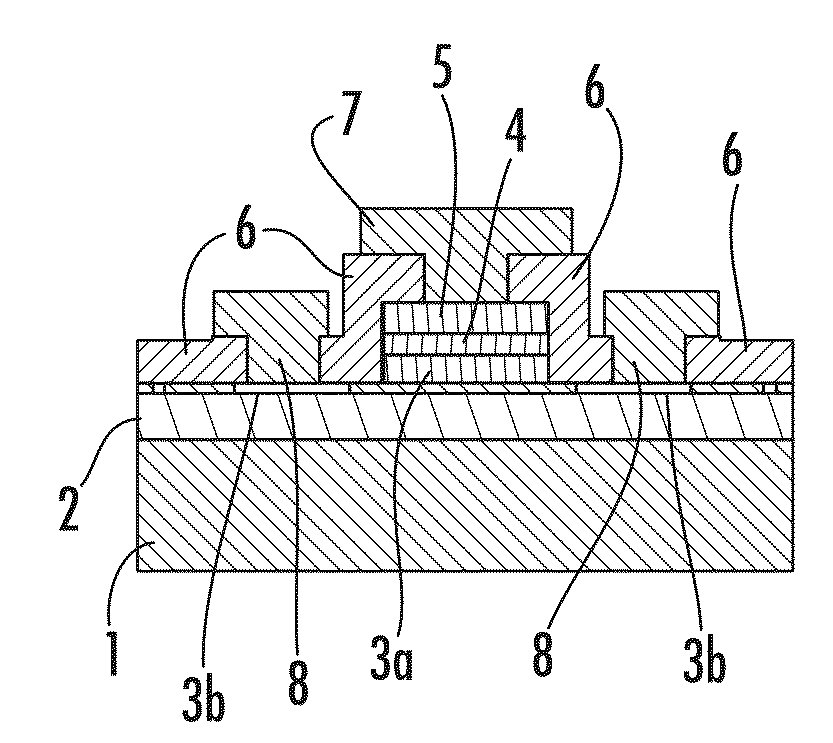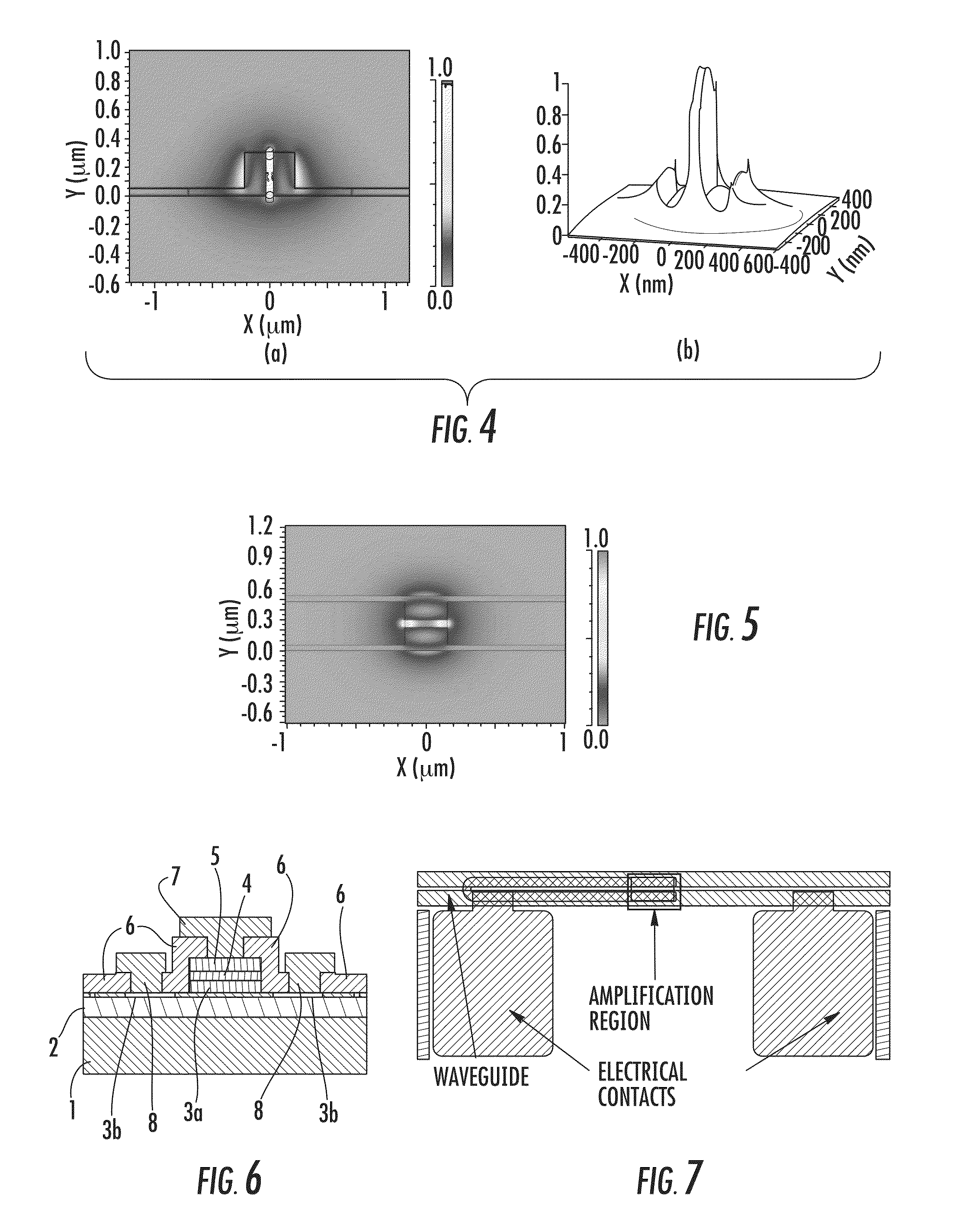Electrically pumped lateral emission electroluminescent device integrated in a passive waveguide to generate light or amplify a light signal and fabrication process
a technology of lateral emission and electroluminescent devices, which is applied in the direction of electrical equipment, excitation process/apparatus, laser details, etc., can solve the problems of achieve the effect of avoiding coupling losses and limited development of optical interconnections
- Summary
- Abstract
- Description
- Claims
- Application Information
AI Technical Summary
Benefits of technology
Problems solved by technology
Method used
Image
Examples
Embodiment Construction
[0046]Exemplary embodiments will be now described only for illustration purposes, referring to the attached drawings. The proposed exemplary geometries, fabrication process flow and parameters that may be used for practicing the invention may be different and may be chosen by the designer depending on preferences and specific needs of the application. Therefore, the invention is not limited to the herein illustrated and described exemplary embodiments.
[0047]According to an embodiment, the electroluminescent device comprises a slot waveguide formed of a thin layer of silicon oxide having a relatively low refraction index and thickness smaller that 70 nm, and more preferably 50 nm, between a bottom and a top layer of silicon of a relatively higher refraction index, both of a thickness that may range between 150 nm and 300 nm. At least a portion (tract) between undoped portions of the thin core layer of silicon oxide of the waveguide in the propagation direction of an optical signal, i...
PUM
 Login to View More
Login to View More Abstract
Description
Claims
Application Information
 Login to View More
Login to View More - R&D
- Intellectual Property
- Life Sciences
- Materials
- Tech Scout
- Unparalleled Data Quality
- Higher Quality Content
- 60% Fewer Hallucinations
Browse by: Latest US Patents, China's latest patents, Technical Efficacy Thesaurus, Application Domain, Technology Topic, Popular Technical Reports.
© 2025 PatSnap. All rights reserved.Legal|Privacy policy|Modern Slavery Act Transparency Statement|Sitemap|About US| Contact US: help@patsnap.com



